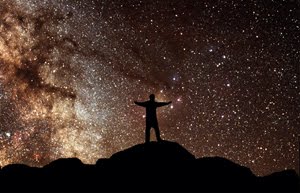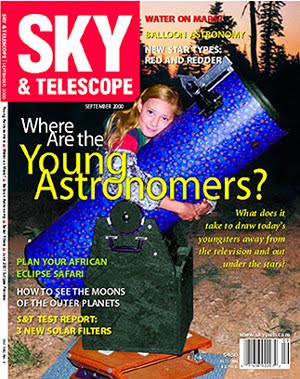Yesterday I drove from the east bay to the old gold town of Columbia, on highway 49 - just north of Jamestown and Sonora. Columbia is a State Historic Park and is beautifully preserved and rebuilt - with running stagecoach, active gold mine and pedestrian main street full of interesting shops, displays, restaurants and hotels, as well as a live theater. A large chocolate Dreyers ice cream cone in hand with which to stroll the old streets on a warm, lazy afternoon, provides a great prelude to a night of observing at Michelle Stone's Plettstone Astronomy Preserve... its great to have places to go in Gold Country, and Michelle's is simply, the best.
Michelle had told me some time ago about the road north of her property, what happens to highway 49 between Mariposa and Sonora. Still, despite the cautions, I could not believe beautiful, tranquil "Gold Country Road" ... a place I'd spent many an afternoon casually driving and enjoying gently curving ridge-hugging scenery, I thought "what the heck... I'll try it".... and so, I descended through the bustling western authentic gold town of Sonora, south toward Coulterville and Plettstone... near Yosemite.
The start of the drive was fine, some twisty-turns, familiar gold country scenery... down into an alluvial canyon where a meandering stream kept switching sides of the bed. Soon I came upon a turn, a fork in the road. I stayed on 49, which bared to the right, away from 120 and the north entrance to Yosemite. The place was called Moccasin, a small town, somewhere, maybe in the hills behind the trees - all but invisible to the casual passer-by. But what did grab my eye was the Water Works. There's a small dam, holding back the stream from its northwestern flow. To its east is a large brick building, facing the reservoir contained water... and to its right are "the works".... machines that must puff out smoke and clang loudly when the flow is at maximum. The mountain, and I mean it in the literal sense, it is not a hill, it is massive, rises abruptly from the riverbed, and on its flank coming out of the Works are four very large pipes, running up the mountain to concrete bunkers spaced strategically along their length. The only other place I've seen something close to this type of engineering feat is near the Grapevine at the south end of the Central Valley, where the California Aqueduct is ported up and over the mountains leading to Los Angeles. It is impressive.
Equally impressive was the drive along and up Moccasin Creek. The turns start immediately. The don't stop for perhaps 30 miles. The climb, twists and turns, no wonder they named it Priest Grade! The climb is tremendous, as are the views along the treed canyons leading out to the west. When I told Michelle about the drive this morning, she began laughing. I talked about getting to the top of the steep grade, up to where John Sutter had built a fort to protect his gold claims, only to find several more sequences of steep windy grades to follow. I haven't been on a drive like that one in years.
I finally arrived at an area that began looking like the terrain around Plettstone, when suddenly the sign appeared to Bear Valley Road, around the corner from my destination. When I pulled in a few friends were already there. It was going to be a short night, moonrise around 12:30 (cresting the mountains), but it was great to be there. Into Mariposa for a quick bite to eat at the Happy Burger (they recommend their ostrich burgers "pink"), and back to the observing site.
All during the afternoon the skies looked hazy. Fires had apparently broken out all along the Sierra foothills. I didn't think the transparency would be very good... but I would be surprised! Richard Navarrete and I teamed up to go over some of the Herschel 400, a project we'd both completed, but we were "out of objects" (isn't that ridiculous!) for this season, and just wanted to look at some objects that might be interesting. We both had laptops set up running The Sky. Richard set up his C11 and I the 18" Obsession. The first object was....
NGC 6826, the Blinking Planetary. I was looking at it from Chabot Friday night - always fun to see the "fuzz" blink out and have that central star show so well.
Next was NGC 6905 in Delphinus - The Blue Flash Nebula. I had trouble finding this one and had to look through Richard's Telrad. It seemed interesting - some internal structure. I began increasing the magnification, and at 283X the planetary appeared elongated - football shaped. If I recall correctly, there were brighter sections along the edge of the disk, making it seem somewhat bipolar - kind of a "proto-peanut-planetary", and I felt there was some dark area in around the central star - perhaps forming a ring (didn't take notes).
Two good planetaries... I suggested we drop the 400 and do some planetaries. The seeing was pretty good, and objects did not seem diminished by the smoke (maybe it had cleared).
We went to NGC 40 in Cepheus. It held high power, even disk, but again, some brightening along opposite edges.
Next to NGC 7008 in Cygnus - kind of comma shape. At 283X the view was great, with a 1-1/4" DGM Optics VHT filter. All kinds of bright knots - this planetary has a lot going on! The night was turning into something quiet good. We kept going...
On to Open NGC 6905 in Delphinus, then a visit to Cepheus - NGC 6369, a nice open cluster paired in a wide field eyepiece with NGC 6946 - a good face on spiral galaxy. In a finder they both look like galaxies.
Looking up again at Cygnus I moved to the Crescent - NGC 6866 - somewhat washed out - maybe the smoke was a problem after all. Also, had a heck of a time finding it - odd - usually it stands out well enough without a filter, but this night it was so *barely* there that I passed over it several times, as did Richard, both of us saying "where is it?" But as soon as I put the OIII filter on - definitely there. Nice, but not great view.
The most spectacular view of the night - hands down- was the Veil Nebula. The Waterfall, NGC 6992, showed more detail, or as much - no - more detail than at Shingletown this year - where I was just floored by the intricacy of the filaments. This night, was amazing. The bottom of the Waterfall curved back under the arc - Rashad saw it, Richard saw it, but in the Digital Sky Survey I can't see it. Amazing. Other sections that had previously been "suspected" were obvious - the entire center section, the gorgeous extension off the thin end of the Witch's Broom. What a night.
From off to my right came the invitation "have a look at the North American" - and over I went to a 17.5" Earlatron. The NA was magnificent - thick - white icing on devil's food kind of appearance. Slathered on. Across from the NA the Pelican Nebula was easy to make out - no doubt. Amazing! The contrast between the thick sections of nebulosity and the pitch black dark areas was stunning.
Michelle has the place!
After a beverage break, Richard and I poked around NGC 6866, a nice open cluster in Cygnus, then up into Cassiopeia, where I began with the diminutive cluster NGC 654, which led me to NGC to its big splashy neighbor NGC 663, again on to little NGC 669 and finally, hoping over to M103. Any of these three non-M clusters could take the place of M103 in Charlie's catalog.
Being so close, I also jumped over to the ET cluster, NGC 457 and its dim neighbor at the alien's feet, NGC NGC 436.
It was getting late now, by the "moon clock" - The Great Plaster Ball was beginning to show some brightening over the eastern hills. Michelle called a few of us over to look through the outstanding 15" Plettstone scope she has for her personal use. She was proclaiming that this was the best view of M57 she'd ever had. I thought "ho-hum... another M57" and began to call out "last call for M57"... and then I looked...
The Ring was green, at least to me. I think my color perception is quite acute. There was a green hue in the grey. The object was magnified over 300X and... all of a sudden, a pinpoint in the center, then gone. Then it was back, gone, back... soon I was pretty much holding the central star with averted vision. The only other times I've seen it are through the 40" Nickel at Mount Hamilton, and the 30" Starmaster Jim Ster hauled up to the Oregon Star Party last year.
Yes, Michelle, it was the best view I've ever had. Quite a telescope you made - competing with a 30 and a 40. You win! :-)
Thanks, Michelle, for such a fun night. As usual, it is hard to leave. The beautiful environs of Mariposa make you want to stay, and if you can't, certainly you want to come back.
Best of luck, Michelle, at Oregon Star Party this year... I'll be back up at Plettstone next month.
The drive home was quick... traffic on 580 westbound to 680 was a bear, even on a Sunday at noon. Amazing. I'd rather leave civilization behind. Even if the alternative were Mocassin Creek.











